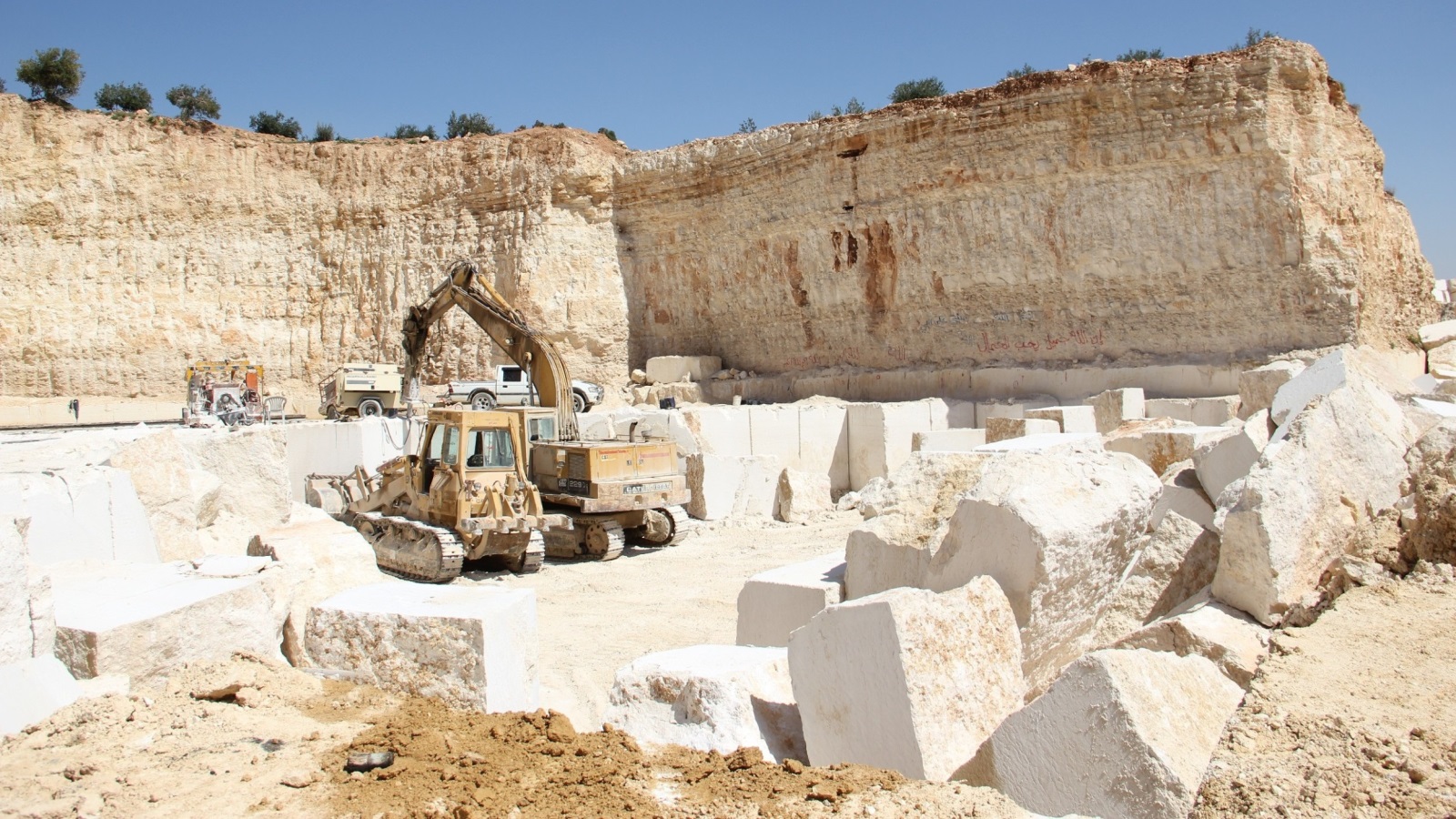
Palestine has known the stone industry and jewelry since ancient times. However, over time, the means, methods and volume of its production, as well as its users, have changed to become an important economic resource that directly contributes to economic production and provides employment opportunities for thousands of Palestinians.
Today, the use of stone (or white gold, as some prefer to call it) is no longer confined to the wealthy or wealthy class, or confined to the construction of mosques, churches and shrines, as in historical periods when industry and modern machinery contributed to the abundance of production and the provision of goods at prices. suitable for all social strata.
The journey of the Palestinian stone begins in the so-called quarries, where its discovery depends on the experience of those with experience based on the nature of the earth. Here, heavy machinery begins to dig up to fifty meters underground to remove a layer called «Al-Shamha» and is often used in crushers to produce concrete (concrete) and asphalt until the required layer is reached. to extract the stone.
At this stage, the rock is leveled and marked in preparation for sawing with an electric saw and removed into blocks 3 meters long, 1.7 meters wide and 1.7 meters high, which are loaded onto trucks and transported to factories. Also featured is Ahmed Thawabteh, director of Al-Jaber and owner of a quarry in Beit Fajar, south of Bethlehem.
Beit Fajar has been famous for its stone industry for hundreds of years, and of the city’s approximately 15,000 inhabitants, 3,000 of them work in 150 factories and 40 quarries, in addition to hundreds of other residents in the city. …
In stone factories (saws), large blocks are cut into small pieces according to the requirements, color and type, and then the craftsmen cut them (engraving) at the request of “brick, muffler, bumper, plain, sesame, etc.”
Stone prices range from ten to eighty dollars per square meter, depending on use, type, quality, and thickness. There is a stone that is used for external and internal structures, decoration of entrances and floors, and there is a hard and less hard stone. dominated by white, yellow, blue, black, gold, silver, yellow and others.
Inside a Palestinian stone factory with international specifications (Al Jazeera)
According to Maher Hasheesh, executive director of the Stone and Marble Union, about 20,000 Palestinians work directly in some 1,300 stone-making factories in the West Bank, two-thirds of which are located in the provinces of Hebron and Bethlehem in the south. …
According to the same source, the stone industry began in Palestine as an economic activity in the twenties and thirties of the last century with hand tools, then mechanization entered it in the seventies, and to this day it accounts for 4.5% of the total production in Palestine. with an estimated profitability of about $ 450 million per year and more than seven hundred million dollars per year.
And the decoration of the stone depends on its type: the stronger it is, the more beautiful and decorative, and although carvers continued to rely on their hand tools until the seventies, modern equipment helped to ease the task and increase production.
Abdul Gayt, who began carving and decorating stone over thirty years ago, explains that he started with a chisel (hard iron nail) and a hammer, then he himself developed tools for engraving and turning stone and created mechanisms that help to produce quantities suitable for orders.
He indicated that he was able to reproduce the Roman crown common in Palestine and dating back thousands of years. He explained that jewelry becomes more beautiful as the precision increases: «This is a profession that requires taste, accuracy and discretion in engraving.»
Gate confirms a rise in the number of stone-finishing machines, but he says products and jewelry did not make it overseas and most of them continued to be sold in the local market in Palestine.
According to the Stone and Marble Union, Israel is the largest importer of Palestinian stone, acquiring about two-thirds of its production, followed by the Gulf countries, after the United States was the leading importing country many years ago.
The Palestinian stone began to go abroad in 1996, years after the birth of the Palestinian entity that bears his name.
Since before that, exports were limited to Jordan, and the products were exported on behalf of Israel. Today, stone products from Palestine have reached more than ninety countries around the world, and major projects have been implemented with them in the United States of America.
He pointed out that the Palestinian stone has proven its applicability with its many colors on the one hand and its adaptation to climatic conditions on the other hand, pointing out that his company has adopted international production and export standards, as well as the use of the latest mining equipment. and the production of stone.
He noted that the problem of occupation, checkpoints and dominance at crossings, as well as water scarcity, prompted companies to establish wastewater treatment plants.
Despite the importance of the industry and its ability to penetrate the world, the occupation rears its head and poses a real challenge for the industry, as it controls the (C) classified (C) stone mining areas under full Israeli control. as well as his control over energy and water.
According to Stone Union, the average factory uses ten thousand dollars a month of energy, while the entire sector uses about two million cubic meters of water. At a time when the south of the West Bank suffers from water shortages.
